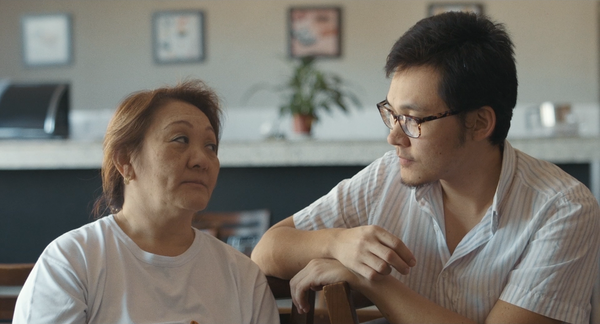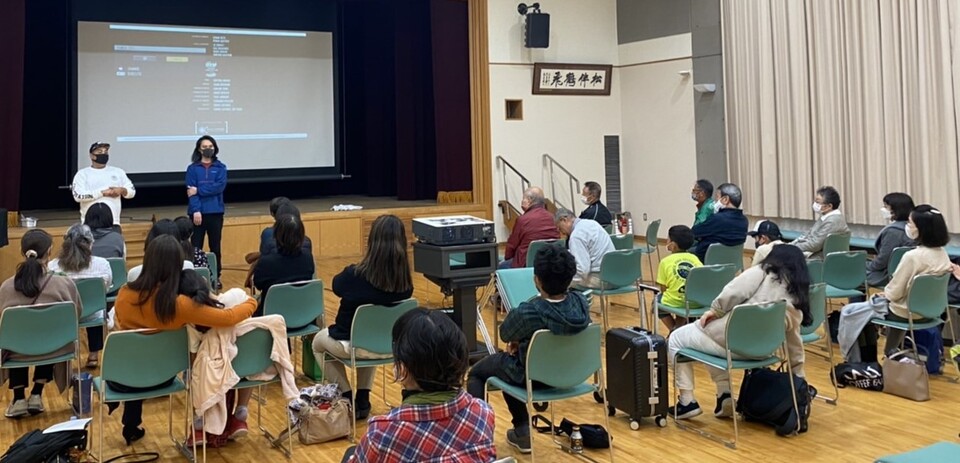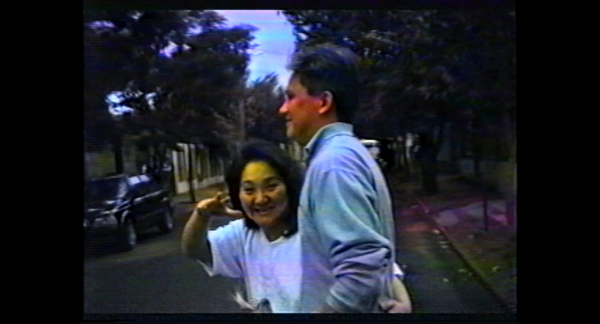
A still from Welcome back, Farewell - Marcos and his mother
"Dekasegi," a Japanese term for working away from home for financial stability, is now widely used by Brazilians. The expression has a long history due to the immigration between Brazil and Japan.
At the end of the nineteenth century, Brazil was facing a labor shortage, while Japan was facing a food shortage. To alleviate these problems, both governments signed an agreement to send Japanese immigrants to Brazil. As a result, more than 250 thousand Japanese people went to Brazil during the first half of the twentieth century, mostly to São Paulo state. Most stayed permanently. To date, there are around 2 million Japanese descendants in Brazil, making up the largest population of Japanese outside Japan.
Decades later, in 1990, Japan faced a shortage of manual labor and it started issuing a special type of temporary working visa for Japanese descendants. Because of this visa, many Brazilians of Japanese descent have come to Japan since then. They work in Japan for higher wages than in Brazil and send remittances to their families in Brazil. This phenomenon, as well as people who migrated to Japan to work, is called dekasegi. Companies offered manufacturing jobs to Brazilians, regardless of their skills and experience. This brought many dekasegi people to Nagoya and surrounding cities, where most of Japan's large manufacturing companies are located.
Marcos Yoshi was an exchange student from São Paulo University through NUPACE, the Nagoya University Program for Academic Exchange, doing his Ph.D. research on first-person documentaries. Based on his own experience, he made a documentary film to describe the story behind the dekasegI phenomenon.
A still from Welcome back, Farewell - Marcos' parents
Marcos himself is a Brazilian of Japanese descent. When he was a child, his parents came to Japan as dekasegi, planning to stay for a few years. However, they ended up staying in Japan for more than a decade to financially support their family in Brazil. Not surprisingly, after living several years in Japan, they began to lose touch with their Brazilian life. The family went through difficult times being apart from each other but tried to stay connected. They eventually returned to Brazil but found an unstable job market. So, they came back to Japan. "The hardest part is that it's a never-ending process," Marcos said. Importantly, this was just one of many families who experience separation due to the dekasegi phenomenon, that continues today.
The film "Welcome back, Farewell," was released in 2021. It is Marcos' debut documentary feature film and it was officially selected in more than 15 film festivals worldwide.
 Film screening at Nagoya University as part of a cinema studies class taught by Professor Ma Ran (2nd from the left).
Film screening at Nagoya University as part of a cinema studies class taught by Professor Ma Ran (2nd from the left).
On November 11th, 2022, the film was screened to a full house at Nagoya University as part of a cinema studies class taught by Dr. Ma Ran, associate professor in the Graduate School of Humanities. After the screening, Marcos, Professor Ma Ran and the audience discussed his filmmaking process and his own experience of going through the dekasegI phenomenon. The film was later shown at Homi Danchi in Toyota City, 40 minutes from Nagoya, which is known to have one of the largest populations of Brazilian decassegui people in Japan.
Importantly, the dekasegi phenomenon involves several other intertwined issues, including difficulties in overcoming lifestyle differences, language, and lack of understanding of the multifaceted identities of Japanese Brazilians. Against this backdrop, Marcos' film also attracted the attention of people interested in immigration issues in Japan. It was also screened for students and researchers in social science at the Tokyo University of Foreign Studies and Kobe University.

The film was screened at Homi Danch in Toyoda city, where a lot of Brazilian dekasegi people live.
-----------------------------
- Check out the trailer of the film at https://vimeo.com/473230144
- Marcos Yoshi was an exchange student via NUPACE, the Nagoya University Program for Academic Exchange. To learn more about NUPACE, visit https://nupace.iee.nagoya-u.ac.jp/en/.
- To learn more about the Cinema Studies, visit https://eizogaku.wordpress.com
---------------------
Written by Reiko Matsushita

